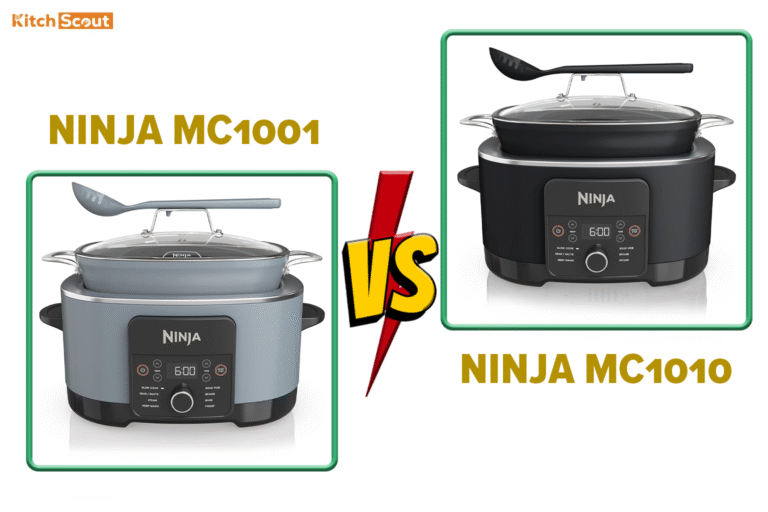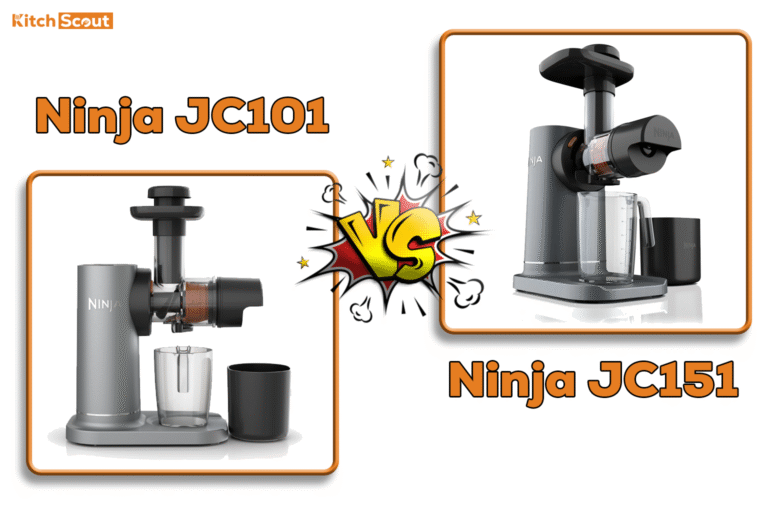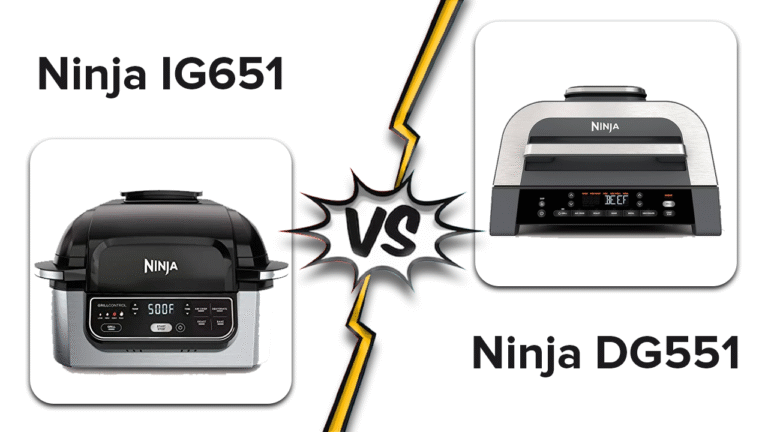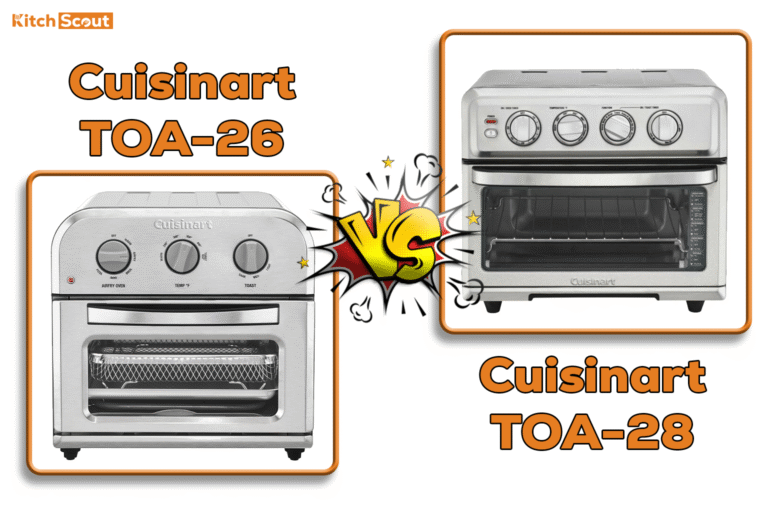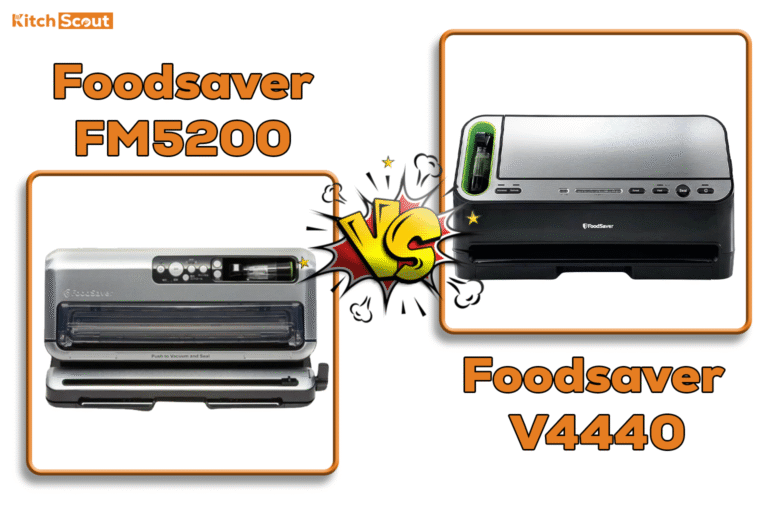Panasonic vs Toshiba Microwave – My Wild Pick
Panasonic vs Toshiba Microwave: Choosing the right microwave isn’t just about pressing a button and walking away. At least, not for me. Living in a humid Southern state in the U.S. my microwave is more than just a reheating box it’s a lifeline for busy mornings, lazy nights, and everything in between. Whether it’s softening butter for baking, defrosting chicken before dinner, or making popcorn for family movie night, my microwave gets used almost every single day.
Over the years, I’ve tried two brands that really stood out: Panasonic and Toshiba. Both are well-known, widely available in the U.S., and priced in a way that makes sense for most households. But here’s the truth: they’re not the same, and depending on what you need, one might be a better fit for you than the other.
I’ve owned and used both, side by side, in my own kitchen. I’ve tested them not just in theory but in real-life scenarios: heating leftover pizza, thawing ground beef on a busy weeknight, and even experimenting with mug cakes when my sweet tooth hit. And I’ll be honest both have their strengths and weaknesses. That’s why this review isn’t just about specs and numbers. It’s about what it’s really like to live with these microwaves every day.
Before we dive into which one takes the crown, let’s start with a proper introduction to both products because while they seem similar at first glance, Panasonic and Toshiba microwaves are designed with different philosophies in mind.

Is Panasonic Microwave Good? My Hands-On Review
If you’re wondering whether a Panasonic microwave is worth it, let me start with this: mine has been in my kitchen for over three years, and it’s still going strong. I’m not the type who treats appliances gently, either. Between kids pushing random buttons, a couple of power surges, and daily reheating of everything from leftover pizza to frozen veggies, this microwave has seen it all. And yet it still works almost like new.
That’s why when people ask me, “Is Panasonic microwave good?”, my answer is a clear yes. But let’s dig deeper into why I think so, because not all “good” appliances are created equal.
My First Experience with Panasonic
The first time I bought a Panasonic microwave, it wasn’t because I researched specs. Honestly, I just needed a new one quickly after my old off-brand model died on me. I picked Panasonic because it was available at Walmart and looked more durable than the other options in the aisle.
I didn’t expect much. But the moment I used it, I noticed a difference. My leftover chicken curry heated evenly not scorching hot on the edges with a frozen middle. For someone who grew up with microwaves that always left cold spots in food, this was huge.
Later, I learned this was thanks to Panasonic’s Inverter Technology. Instead of blasting food with full power in intervals (like many microwaves do), it delivers a steady stream of consistent heat. In real-life terms, this means no more half-cooked defrosts or soups that are hot on top but cold in the middle.
What I Use My Panasonic Microwave For
To give you a clear picture, here’s how my Panasonic fits into my daily routine:
- Reheating leftovers: Pizza, rice bowls, pasta, soup you name it. I don’t need to stir halfway, which saves me time.
- Defrosting: I often buy meat in bulk and freeze it. This microwave lets me defrost ground beef or chicken without turning the edges into rubber.
- Quick cooking: Microwave mug cakes, steaming veggies, or even melting chocolate for desserts it handles all of this well.
- Family snacks: Popcorn on Friday movie nights is a tradition in my house, and Panasonic never burns the bag like some microwaves I’ve had in the past.
If you use your microwave mostly for quick reheats and the occasional frozen dinner, Toshiba might serve you just fine (I’ll get into that later). But if you’re like me using it daily for more varied tasks Panasonic shines.
Why Panasonic Microwaves Stand Out
Let’s break down the pros of Panasonic based on my personal use:
1. Even Heating (Inverter Technology)
This is the biggest win. When I make oatmeal in the morning, it comes out smooth and hot all the way through. No more hot rims and cold centers. For families like mine, where kids get picky about food being the “wrong temperature,” this feature is a lifesaver.
2. Reliability
Three years in, mine hasn’t slowed down. No weird noises, no inconsistent heating, no broken buttons. I’ve had cheaper microwaves conk out after just one year.
3. Easy-to-Use Buttons
I’m not a fan of overly complicated control panels. Panasonic’s layout is simple and practical. I can press “Sensor Reheat,” and it does the rest. Presets for pizza, popcorn, or beverages actually work (unlike other brands where you still end up babysitting the food).
4. Strong Value for Daily Use
While Panasonic microwaves are usually priced a little higher than Toshiba, I think they’re worth it. Spending a bit more upfront has saved me from replacing a microwave too often.

Where Panasonic Could Be Better
Of course, no appliance is perfect. Here are a few things I’ve noticed:
- Design is a bit plain: Panasonic focuses more on function than style. Mine doesn’t exactly “wow” anyone in the kitchen. It’s clean, but if you want a sleek, ultra-modern look, it may not be your best fit.
- Compact models can feel cramped: I almost bought one of their smaller models, but thankfully checked the interior dimensions first. Some compact versions won’t fit larger dinner plates.
- Loud beeping: When food is done, it beeps sharply and keeps beeping if you don’t open the door right away. Not a dealbreaker, but annoying when you’re sneaking a late-night snack.
Real-Life Example: A Busy Morning
Here’s a snapshot from last week: I woke up late, needed to pack lunches, and had only 10 minutes before heading out. I had frozen broccoli to thaw, rice to warm up, and my coffee had gone cold.
In 8 minutes, my Panasonic microwave handled it all:
- Defrosted broccoli without turning it mushy.
- Reheated rice evenly (no hard grains).
- Warmed my coffee without overheating the mug.
I walked out the door on time, lunches packed, and coffee in hand. That’s what I mean when I say this microwave makes life easier.

How Panasonic Compares to Other Microwaves I’ve Owned
I’ve owned cheaper brands before mainly small countertop models that cost less than $70. Here’s the truth: those worked okay for about a year but always had the same problems: uneven heating, annoying cold spots, and shorter lifespans.
Panasonic cost me about $50 more than those bargain models, but it has lasted over 3x longer without headaches. To me, that’s worth it.
Availability in the U.S.
Another plus is how easy it is to buy a Panasonic microwave in the U.S. You don’t have to hunt around they’re everywhere:
- Amazon (fast shipping, lots of models and sizes)
- Walmart (budget-friendly options)
- Target (stylish mid-size models)
- Best Buy (larger capacity, higher wattage models)
And if something goes wrong, customer support is simple to reach. Replacement parts like trays or rollers are easy to order online. That gives me peace of mind.
Who Should Buy a Panasonic Microwave?
Based on my experience, Panasonic is best suited for:
- Families: If you’re constantly reheating meals, defrosting meat, or making snacks, you’ll love the consistency.
- Busy professionals: Saves time with fast, even heating no babysitting required.
- Home cooks: If you experiment with recipes, melt chocolate, or steam veggies, the inverter tech makes a difference.
- Anyone wanting durability: It’s built to last longer than bargain models.
Who might not love it? If you’re a college student in a dorm, rarely cook, or just need something for popcorn and coffee, Panasonic might feel like overkill. In that case, Toshiba could be a smarter (and cheaper) pick.
My Verdict on Panasonic Microwaves
So, is Panasonic microwave good? Absolutely.
It’s not perfect the loud beeping drives me a little crazy, and the design is pretty plain. But when it comes to the stuff that actually matters heating, defrosting, and reliability Panasonic nails it.
For me, it’s worth every dollar. I don’t have to worry about cold food, uneven thawing, or replacing it every year. And in a busy American household where time and convenience are everything, that reliability counts.
If I had to sum it up in one line:
👉 Panasonic is the microwave you buy if you want something that just works day after day, year after year.

Is Toshiba Microwave Good? My Real-Life Take
After using a Panasonic microwave for years, I wasn’t in the market for another brand until I moved into a smaller house and needed a second unit for my downstairs kitchenette. That’s when I decided to give Toshiba microwaves a shot. I’d heard good things about their price and reliability, and honestly, I was curious to see how they stacked up against Panasonic in real, everyday use.
I bought my Toshiba on a whim during a sale on Amazon. It was compact enough for my counter space, looked neat, and had decent reviews. At first, I thought it would just be my “backup microwave.” Funny enough, it’s now the one I use almost every day especially for quick meals and reheats. Let me break down why.
My First Impression of Toshiba
When I first unboxed it, the design struck me as simple and clean. Nothing flashy, no stainless-steel glamour like you’d find in higher-end models, but it blended nicely with my kitchen. It also felt sturdier than I expected for the price. The door shut with a satisfying click no flimsy plastic feel like you sometimes get with cheaper microwaves.
I’ll admit, I didn’t expect much from it at first. But the first test heating up soup surprised me. My old off-brand microwave used to leave a cold middle in every bowl. This Toshiba? Smooth, even warmth all the way through. That was the moment I thought: Okay, maybe this little guy can hold its own against Panasonic.
What I Use My Toshiba Microwave For
Here’s how Toshiba has fit into my life so far:
- Soup reheats: It’s my go-to for late-night bowls of tomato soup or chicken noodle. Always comes out evenly hot, no boiling edges with cold centers.
- Defrosting meat: I freeze ground beef a lot, and Toshiba defrosts it without overcooking the outer layer. A small but very important win.
- Leftovers: Pasta, casseroles, or stir-fry the Sensor Reheat function actually works. It detects steam and adjusts power automatically. I used to think this was just a gimmick, but now I rely on it.
- Quick snacks: From popcorn to warming tortillas, it nails the basics without making me babysit the process.
If Panasonic feels like the “serious cook’s microwave,” Toshiba feels like the everyday practical microwave simple, reliable, and fuss-free.
What I Like About Toshiba Microwaves
Based on daily use, here are the highlights:
1. Reliable Performance
I’ve had mine for over a year now, and it still runs like it did on day one. No weird rattles, no fading display, no decline in heating power. That’s impressive for a budget-friendly brand.
2. Sensor Cooking That Actually Works
The “Sensor Reheat” button seemed like fluff when I bought it. But honestly? It works great. When I reheat leftover pasta, I don’t have to stop and stir or guess the time. It adjusts itself and comes out just right.
3. Quiet Operation
This one surprised me. My Panasonic is powerful, but it hums pretty loudly. The Toshiba, on the other hand, is quieter. For someone like me who often reheats food late at night, that’s a blessing.
4. Great Value for the Price
For under $150 (sometimes less on sale), you get sensor cooking, solid build quality, and consistent performance. That’s a lot of bang for the buck.
Where Toshiba Could Be Better
Of course, it’s not perfect. A few quirks stand out:
- Plain design: While it’s neat and tidy, it doesn’t exactly make a style statement. If you’re into modern, stainless-steel kitchens, this may not wow you.
- Control panel learning curve: The buttons are simple enough once you learn them, but I did have to peek at the manual the first few times. Not a dealbreaker, but not as intuitive as Panasonic.
- Bigger footprint: Even the “compact” models tend to be a bit deep. If you’re in a dorm or small apartment, double-check the dimensions before buying.

A Real-Life Example: The Ground Beef Test
Here’s a test I always run with new microwaves: defrosting ground beef.
Why? Because it’s the ultimate trial. Most microwaves either leave icy chunks in the middle or cook the edges into rubber. With Toshiba, I defrosted a full pound of beef, and it came out evenly thawed with no cooked spots.
That might not sound exciting, but for anyone who meal preps or cooks regularly, you know how frustrating uneven defrosting can be. Toshiba passed the test and that’s when I knew it wasn’t just a “backup microwave.”
How Toshiba Compares to Others I’ve Owned
Before Toshiba, I tried a few small-name brands that were cheap but didn’t last. They either lost power after a year or developed hot spots that burned food.
Compared to Panasonic, Toshiba isn’t quite as powerful or advanced (no inverter tech here), but it wins on simplicity and value. If Panasonic feels like the workhorse in my main kitchen, Toshiba feels like the dependable sidekick in my kitchenette. Both serve different roles well.
Availability in the U.S.
Just like Panasonic, Toshiba microwaves are easy to find in the U.S.:
- Amazon (often has the best deals and widest variety)
- Walmart (budget models in-store and online)
- Target (mid-size, stylish versions)
- Best Buy (higher-end sensor models)
Replacement parts like glass trays or roller rings are also widely available, which gives me peace of mind about long-term use.
Who Should Buy a Toshiba Microwave?
From my experience, Toshiba is best suited for:
- Students or small households: Compact size, reliable, and affordable.
- Anyone on a budget: You get good features without spending a fortune.
- People who reheat more than cook: If you mostly use a microwave for leftovers, snacks, and frozen meals, Toshiba hits the sweet spot.
- Late-night snackers: Quieter operation means you won’t wake the whole house.
Who might not love it? If you’re someone who wants cutting-edge cooking tech, ultra-sleek designs, or the absolute fastest heating possible, Panasonic may feel like a better match.
My Verdict on Toshiba Microwaves
So, is Toshiba microwave good? Yes very good.
It’s not trying to be fancy. It doesn’t have the flashiest design or the highest wattage. But it nails the basics: heating evenly, defrosting properly, and running quietly. For its price, that’s hard to beat.
To me, Toshiba is the kind of microwave you buy if you want something dependable and affordable that doesn’t overcomplicate things. It won’t replace a Panasonic in a gourmet kitchen, but for everyday reheating, snacks, and frozen meals, it’s an easy winner.
If I had to sum it up in one line:
👉 Toshiba is the microwave you buy when you want simple, reliable performance without overspending.
Panasonic vs Toshiba Microwave: Detailed Comparison
After using both Panasonic and Toshiba microwaves in my own kitchen, I’ve realized that while they both get the job done, they each bring something unique to the table. I’ve owned Panasonic for years and Toshiba for over a year now, and I can tell you firsthand that the differences only become clear once you actually live with them. Specs are one thing, but how a microwave fits into your daily routine is where the truth lies.
So let’s break it all down heating power, defrost quality, controls, design, price, ease of use, and overall value.
Heating Power: Panasonic vs Toshiba
When it comes to raw heating power, Panasonic is the clear heavyweight.
- Panasonic: My Panasonic model runs at 1250 watts and uses Inverter Technology, which delivers continuous heat instead of pulsing on and off. This means no more cold centers in leftovers or half-frozen meals. If I reheat soup, I don’t have to stir halfway it comes out evenly hot every time.
- Toshiba: My Toshiba, rated at around 1100 watts, heats well but not as aggressively. It relies more on sensor cooking, which detects steam and adjusts time automatically. It’s convenient, but when I’m in a rush, it feels slightly slower compared to Panasonic.
Example from my kitchen: One Sunday morning, I heated up leftover pancakes in both. The Panasonic did them evenly in one go, while Toshiba left a cooler spot in the middle. Nothing major, but noticeable when you’re picky about warm food.
Rating: Panasonic – 9/10, Toshiba – 8/10

Defrost Quality: Panasonic vs Toshiba
This is one of the areas I care about most living in a humid Southern state means I freeze a lot of food and need to defrost quickly without half-cooking it.
- Panasonic: With Inverter defrost, I can thaw chicken breasts or ground beef evenly. No rubbery edges or half-cooked spots. It feels almost like the microwave “understands” the food.
- Toshiba: Toshiba does an okay job, but sometimes the edges of meat start to cook while the middle stays icy. I noticed this when defrosting frozen salmon Panasonic kept it raw but soft throughout, while Toshiba gave me slightly cooked corners.
Personal test: I once had to defrost two pounds of frozen broccoli for a stir-fry. Panasonic nailed it florets were soft, no watery mess. Toshiba handled it too, but the outer ones started to steam before the middle thawed.
Rating: Panasonic – 9/10, Toshiba – 7.5/10
Control Panel & Ease of Use
Here’s where things flip.
- Panasonic: Offers tons of preset options, which is great once you learn them but there’s a learning curve. For example, my dad once got frustrated trying to reheat spaghetti because the panel wasn’t intuitive. Once you know the buttons, it’s powerful, but it takes some time.
- Toshiba: Much simpler. Big, clearly labeled buttons Popcorn, Pizza, Potato, Reheat. Plus, Toshiba has a “Mute” option for the beeps, which I love when I’m up late at night. I wish Panasonic had that feature.
Personal moment: My kids can operate the Toshiba without asking me how. They still ask for help on the Panasonic. That says a lot.
Rating: Panasonic – 8/10, Toshiba – 9/10
Design & Size Options
Both brands look fine, but they approach design differently.
- Panasonic: Sleeker, more modern appearance. Larger models with more interior space. But they can be bulky and eat up countertop space.
- Toshiba: More compact, with a clean but basic look. Fits easily in smaller kitchens, dorms, or apartments.
From experience: My Panasonic looks good in my open kitchen, where I don’t mind the size. My Toshiba, however, fits perfectly in a tighter corner of my guest house. It’s the brand I’d choose if counter space was limited.
Rating: Panasonic – 8/10, Toshiba – 9/10
Price Range
Now let’s talk dollars.
- Panasonic: Usually more expensive, especially the higher-wattage inverter models. But you’re paying for durability and advanced tech.
- Toshiba: Budget-friendly. You can pick up a solid Toshiba microwave on Amazon or Walmart for far less. They don’t have every fancy feature, but they cover the basics well.
Example: When my niece went off to college, I bought her a Toshiba for under $120. She doesn’t cook much mostly heats ramen, pizza, and leftovers so it was perfect for her. If she were a heavy cook, I’d have gone Panasonic.
Rating: Panasonic – 8.5/10, Toshiba – 9/10
Performance in Daily Use
- Panasonic: Best for people who use a microwave as a real cooking tool. It handles full meals, large casseroles, or multiple portions at once. The heating is faster, more even, and more reliable.
- Toshiba: Best for lighter, everyday use. If your main needs are reheating, making popcorn, or defrosting small items, it works just fine without breaking the bank.
Personal story: On Thanksgiving, I had both microwaves running Panasonic handled stuffing, sweet potatoes, and reheating turkey, while Toshiba helped with smaller sides. Panasonic clearly performed like a workhorse. Toshiba was the reliable assistant.
Rating: Panasonic – 9/10, Toshiba – 8/10
Value for Money
Here’s the trade-off:
- Panasonic: More expensive upfront, but it lasts longer and delivers better results if you cook often.
- Toshiba: Cheaper, simpler, and easier to use. Perfect for students, single folks, or families that don’t lean heavily on microwaves.
Rating: Panasonic – 8.5/10, Toshiba – 9/10
Side-by-Side Summary
| Feature | Panasonic | Toshiba |
| Heating Power | 9/10 – Fast, even, inverter tech | 8/10 – Good, but slightly slower |
| Defrost Quality | 9/10 – Precise, no cooked edges | 7.5/10 – Decent but uneven |
| Control Panel | 8/10 – Powerful but complex | 9/10 – Simple and intuitive |
| Design & Size | 8/10 – Sleek but bulky | 9/10 – Compact, fits anywhere |
| Price & Value | 8.5/10 – Costs more, lasts longer | 9/10 – Affordable, reliable |
| Daily Performance | 9/10 – Great for heavy use | 8/10 – Great for light use |
My Take
If you cook often, need precise heating, and want something that lasts, Panasonic is your best bet. If you want something affordable, compact, and dead-simple to use, Toshiba is a smart choice.
Honestly, I keep both in my home Panasonic for the heavy-duty jobs and Toshiba for quick reheats and guest use. It’s not about which one is “better,” but which one fits your lifestyle.
FAQs and Final Verdict: Panasonic vs Toshiba Microwave
By now, you’ve probably realized that the Panasonic vs Toshiba microwave debate doesn’t have a simple “one-size-fits-all” answer. Both brands are solid, and both have their place in American kitchens. Still, if you’re shopping for one, I know you want clear answers. So let’s go through some of the most common questions people ask me based not just on research but on my own daily use of both brands.
FAQs About Panasonic vs Toshiba Microwaves
1. Which is better: Panasonic or Toshiba microwave?
Honestly, it depends on what you value most.
- Panasonic is better if you want power, even heating, and long-lasting performance. Its Inverter Technology makes a huge difference if you cook or reheat full meals regularly.
- Toshiba is better if you want affordability, ease of use, and compact design. For light daily use like reheating leftovers, making popcorn, or warming drinks, it’s a fantastic budget-friendly choice.
👉 My take: If you cook often, Panasonic is worth the higher price. If you’re a student, a single person, or just don’t use the microwave heavily, Toshiba is the smarter buy.
2. Do Panasonic microwaves last longer than Toshiba?
Yes. In my experience, Panasonic models generally outlast Toshiba by a few years.
My Panasonic has been in daily use for over three years now and still works like new. My Toshiba has lasted over a year and is still solid, but I can already tell the build isn’t quite as heavy-duty. It’s not flimsy, but you notice little things like the door feeling lighter, or the buttons showing wear sooner.
So if longevity is your priority, Panasonic wins.
3. Are Toshiba microwaves good for small kitchens?
Absolutely. This is actually one of Toshiba’s biggest strengths.
I live in the South where kitchens tend to be spacious, but I’ve placed my Toshiba in my guest house, where counter space is limited. Its compact size makes it perfect for:
- Dorm rooms
- Studio apartments
- RVs
- Guest kitchens
If you’re short on space, Toshiba fits where Panasonic’s bigger models might feel oversized.
4. Does Panasonic microwave defrost food evenly?
Yes and this is where Panasonic really shines.
I freeze a lot of meat and vegetables, and with Panasonic’s Inverter Defrost, I don’t get those half-cooked edges that are common with cheaper microwaves. Frozen chicken breasts, ground beef, or even fish thaw evenly without starting to cook at the edges.
Toshiba can defrost too, but sometimes the outside gets rubbery before the inside is fully thawed. That’s a dealbreaker for me when I’m working with delicate foods like salmon.
👉 If you defrost food often, Panasonic is hands-down better.
5. Which microwave is more energy-efficient: Panasonic or Toshiba?
This is an interesting one.
- Panasonic uses inverter tech, which delivers a steady flow of power. That means it doesn’t cycle on and off like traditional microwaves. As a result, it cooks faster and more efficiently, especially with larger meals.
- Toshiba has lower wattage overall (usually between 900–1100W). While this technically uses less power, it often takes longer to heat food. So in the end, Panasonic may actually save you more energy over time if you’re cooking larger meals.
6. Can both microwaves handle daily family use?
Yes, but with different limits.
- Panasonic: Perfect for families who use the microwave heavily every day for defrosting meat, heating casseroles, cooking sides, and reheating leftovers.
- Toshiba: Great for families that use the microwave casually for snacks, drinks, or quick reheats. If you push it hard every single day, it may not last as long as Panasonic.
7. Where can I buy Panasonic and Toshiba microwaves in the U.S.?
Both brands are easy to find:
- Amazon (usually the best selection and fastest shipping)
- Walmart (good for budget Toshiba models)
- Target (often carries mid-range Panasonic options)
- Best Buy (helpful if you want to see them in person before buying)
I bought my Panasonic on Amazon and my Toshiba from Walmart. Both arrived fast, and I had no issues with support when I needed help.
My Final Verdict: Panasonic vs Toshiba Microwave
So after living with both, here’s how I’d break it down in plain English:
- If you’re the type who cooks often, reheats big meals, or wants your microwave to be more than just a popcorn machine get the Panasonic. It costs more, but it’s worth every penny in the long run. I’d trust mine to handle Thanksgiving leftovers, family dinners, and everyday cooking without breaking a sweat.
- If you’re the type who just wants something simple, compact, and affordable, and you mostly use your microwave for snacks, reheats, or frozen meals go with Toshiba. It won’t last forever, but it will serve you well without draining your wallet.
My “Wild Pick”
Here’s the twist: I actually use both.
- Panasonic sits in my main kitchen. It’s the workhorse, the one I trust when I’m feeding the family or cooking for guests.
- Toshiba lives in my guest house. It’s smaller, simpler, and perfect for lighter use. Guests love it because they don’t need me to explain the controls.
If I had to choose just one? I’d stick with Panasonic for my lifestyle. But if I were back in my college days, or living in a small apartment, Toshiba would be my first pick.
Final Ratings Recap
| Category | Panasonic | Toshiba |
| Heating Power | 9/10 | 8/10 |
| Defrost Quality | 9/10 | 7.5/10 |
| Controls & Ease of Use | 8/10 | 9/10 |
| Design & Size | 8/10 | 9/10 |
| Price & Value | 8.5/10 | 9/10 |
| Daily Performance | 9/10 | 8/10 |
| Lifespan & Durability | 9/10 | 7.5/10 |
The Bottom Line
Both Panasonic and Toshiba microwaves are worth your money. It’s not about which one is “better” in absolute terms it’s about which one is better for you.
- Panasonic: Best for families, food lovers, and heavy microwave users.
- Toshiba: Best for students, small households, or anyone who values simplicity and price.
So in the Panasonic vs Toshiba microwave showdown, my advice is simple:
👉 If you need power and reliability, buy Panasonic.
👉 If you need affordability and convenience, buy Toshiba.
Either way, you’ll end up with a reliable microwave that makes daily life a whole lot easier.


